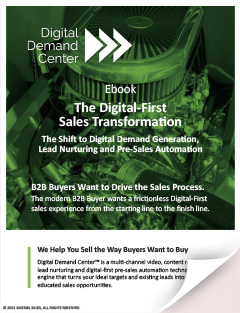 This is part-two of a blog series on five things you may be doing that hurt your B2B content marketing conversion rates. Click here for part one.
This is part-two of a blog series on five things you may be doing that hurt your B2B content marketing conversion rates. Click here for part one.
3. You aren’t offering multiple options for consumption.
In the past decade or so, the traditional mode of selling and buying was flipped on its head and now, buyers hold all the power when it comes to the game of sales. Because buyers now hold the keys in terms of when to view marketing material, how long to view and how to respond, you need to offer them as many options as possible to get them to convert.
For example, let’s say you send out an email with a link for a YouTube video attached. Now, if your prospect is on their mobile device and is taking the subway home, they may have the desire to interact with your content but don’t want to disturb the people around them by playing a loud video. By including a transcript of the video or a slide share presentation with notes attached, you can ensure that regardless of your prospects’ individual situations and preferences, you are offering relevant content they will want to engage with.
4. You aren’t telling people what you want them to do.
It is not likely that your prospects are going to convert if you don’t make it clear and easy for them to do so. Marketing content should always contain a call to action; the action itself can vary, but it should always be obvious to your viewer.
To increase conversion rates, you can use your call to action to help guide your prospect through their buying cycle by leading them from one piece of content to the next. For example, after an educational blog post, invite people to ‘learn more’ by watching your company overview video. Then, on the video page, invite prospects to ‘sign up for a custom demo’. When used in this way, calls to action are about more than just getting a prospect to click on something; they are about helping guide your prospects through their buying journey.
5. You aren’t tailoring your content for different audience segments.
Market segmentation is not a new concept anymore, so if you aren’t segmenting your content in some way at this point, you’re behind. By breaking apart your audience into different segments based on various demographic factors (title, geography, company size, department, etc.), you are able to then tailor the messaging of your content to match the different pains, needs and goals each segment may have.
Segmenting your content successfully requires in-depth knowledge of your customer base. The B2B sale now often involves multiple decision-makers and stakeholders (IT, HR, marketing, etc.), all of whom bring a different perspective to the table. By offering marketing content appropriate for each of those perspectives, you show your prospects you have taken the time to truly understand their needs and goals, which will help you earn their trust.
To learn more about B2B content marketing, you can read another educational blog post here. Please feel free to contact us with any questions.




